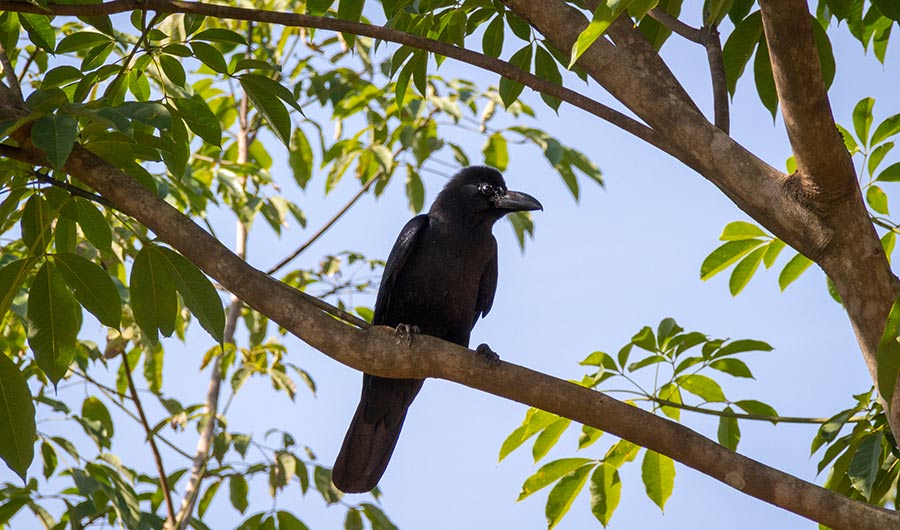New Caledonian Crows Keep Their Favorite Tools Safe

Dmitry Taranets via Shutterstock
(Inside Science) -- Crows and their corvid family kin are known for remembering faces, solving puzzles and giving gifts. One particularly intelligent species of crow, found only on the South Pacific islands of New Caledonia, makes and uses tools to gather food. Now researchers have shown that not only do these crows prefer the tools they use, but they also value those tools differently.
New Caledonian crows are one of only a handful of birds that forage with tools. They favor hook-shaped sticks, fashioned from twigs, to fish out grubs and other bugs from hard-to-reach places. The crows even have a particular plant they deem superior, a shrub on the island called Desmanthus virgatus. Researchers from the United Kingdom observed that the crows tended to handle their hooked sticks more carefully than straight sticks, taking precautions to avoid dropping or losing them. They interpreted this cautious behavior as the crows' way of "valuing" their tools, "similar to how a human might put a treasured pen in a penholder," said senior author Christian Rutz, a biologist at the University of St. Andrews in Scotland. The team published their results in December in the journal eLife.
"We were really interested in whether they treat those two different types of tools differently," said Barbara Klump, a behavioral ecologist now at the Max Planck Institute of Animal Behavior in Germany and first author of the study.
In previous work with New Caledonian crows, Klump and her colleagues studied how crows would use a tool to get a snack and then, needing their beak free to eat, would keep the stick safe for a second use. They explored this further by watching the crows forage at various heights, expecting the birds to be more careful with their tools off the ground. Sure enough, the crows took extra care to "safeguard" their sticks by pinning them underfoot or placing them in a nearby bark nook.
The researchers then went on to see if the crows saved hooked tools more often than straight ones. Because they are made by hand -- or rather, beak -- the hooked tools require more time and energy to make, said Klump. But the crochet hook-like sticks increase foraging efficiency, making them more prized than a straight stick.
To test their idea, the team caught 17 wild New Caledonian crows and temporarily held them in captivity. The birds were presented with stick tools, or the materials to make them, and a log peppered with beef-baited holes to forage in. Feathered participants encountered four tool scenarios: straight sticks sourced from leaf litter; forked D. virgatus sticks that could be made into hooks; pre-made straight sticks from D. virgatus; and pre-made hooked sticks from D. virgatus. Researchers watched the crows fish around in the log, and noted what happened to the tools in between use.
Generally, the crows saved both hooked and straight tools instead of casting them aside. More care was given to the hooked sticks, though -- 95% of the time, crows safely tucked away their personally made hooked tools, as opposed to 87% of the time with a straight tool they found. This is similar to how humans are more cautious with things they value, said Klump. For example, we may be careful with our cell phones most of the time, but a brand-new phone likely gets even more special treatment, because it holds a higher worth. It didn't appear to make a difference whether the tool was gifted by a researcher or made by a crow, either. This may be because the crows find inherent value in all hook tools, as opposed to assessing their value on a stick-to-stick basis.
"This study was really well designed to show a very clear behavior," said Cody McCoy, a Stanford University scientist who has studied crow behavior in the past but was not involved with the study. "It allows us to peek into their mind and try to understand their experience with the world."
Rutz noted the benefit of their experimental design was that it didn't involve any pre-training or long captivity. The researchers were able to observe the crows' preference just by watching how they handled the tools.
"This is a completely new way of looking at how animals value objects," he said. "I'm hopeful that this will spark some interesting research."
